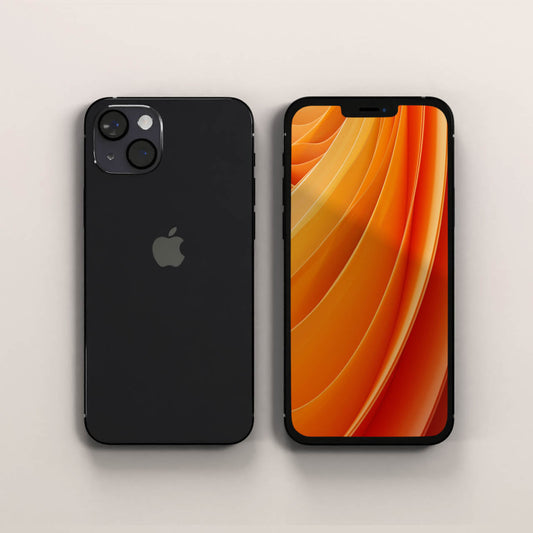Free 30-Day Returns
Free Shipping
Certified 55-Point Inspection
Customer Service 7 Days a Week
Free 30-Day Returns
Free Shipping
Certified 55 Point Inspection
Shop by Category


Refurbished iPhone 14
USED IPHONE 14 FOR SALE
The Apple® iPhone 14 offers the same great user experience you've come to know and love, combined with the most powerful features yet. Enhanced image processing and cinematic modes level up your selfie and TikTok game, even in low-light atmospheres.
With almost 1.8 million available apps, you'll find even more ways to have fun or stay productive on the go — for up to 26 hours on a single charge!
Why Buy a Certified Refurbished iPhone 14?
Apple's smartphones remain among the globe's most popular smartphone choices thanks to their sleek design and ease of use. Buying a refurbished phone comes with the following advantages:
You're Helping Save the Planet
Manufactured goods consume resources and generate emissions. When a still-usable one finds its way to a landfill, it increases electronic waste. Buying a secondhand iPhone 14, through the circular economy, eliminates excess devices in the trash while supporting a healthier environment.
You're Making The Most of Your Budget
Going refurbished gives you more value for the money you spend. You'll still have all the features you've come to rely on. Browse sites and apps on your iPad or iPhone.
Plus, you get upgraded technology like crash detection and off-grid emergency calling — all at prices significantly lower than you'd pay at retail.
You're Buying Quality Products
When you work with a reputable used iPhone reseller, you can be sure that you're getting a quality product. Gazelle thoroughly inspects devices' physical condition and operation. You can trust our technical expertise and quality control to give you a durable, high performing phone.
Gazelle's certified refurbished iPhones have their battery health intact and run smoothly. We test and pass each device through a thorough inspection to make sure your phone works properly.
The Full Functionality of Your Device
Apple's new iPhone releases are always impressive. If you purchase a refurbished iPhone 14 from a trusted reseller, you get an affordable price on hot features like crash detection technology and Apple's photo processing software.
More Flexibility
Buying a used device puts ownership control in your hands, not your wireless provider's. There are no monthly device contracts or payments. As long as your phone is compatible with a carrier, you can switch providers and plans without worrying about paying off your device.
Additionally, you don't have to choose from your carrier's in-stock models. Reseller inventory often changes and generally has more options than what you might see in your local store. With more choices, you're less likely to end up paying for features you don't need.
BUY A USED IPHONE 14 FROM GAZELLE
Customers nationwide trust Gazelle as their iPhone reseller. When you order from us, you get:
- Secure transactions: You can order quickly and confidently — we protect your sensitive information with the latest encryption technology.
- Industry experience: We've been pioneering reCommerce since 2009.
- Gazelle-certified quality: We test all available devices with a 30-point quality and performance inspection.
- A 30-day refund window: Gazelle ensures your satisfaction with a full 30-day money-back guarantee.
- Transparent pricing: Our prices are fair and straightforward — what you see is what you pay.
- Fast shipping: Our team quickly processes and ships orders to get your device to you sooner.
- Shopping convenience: You can order any time, anywhere.
- Carrier compatibility: We verify devices to ensure they work with major wireless providers.
- Plentiful options: We have a wide range of refurbished iPhone 14 models in a wide range of colors from deep purple to space black.
Shop our iPhone 14 inventory now, or browse additional iPhone models to find the ideal one for you.
- Choosing a selection results in a full page refresh.
- Opens in a new window.


















